Story by Jenny Wallace, Castlegar’s Wildsafe Community Coordinator
Castlegar and the West Kootenay region of British Columbia is like the African savanna when it comes to wildlife. Some of the largest creatures on the continent live here and many are unique to this area of the world. In this article we go on safari through the lush valleys and over the snow-capped mountaintops to discover where the wild things are.

Before we do, however, it’s important to remember the animals listed below are wild and should be respected. Here are some guidelines to follow when travelling in the West Kootenay:
- Most animals are active at dawn, dusk, and at night so plan your outing accordingly.
- When hiking, travel in groups, make noise, and carry bear spray with you.
- Stay at least 30 metres from ungulates such as deer and elk.
- Stay at least 100 metres from bears, coyotes and cougars.
- Suffice to say that selfies with wildlife are unsafe.
- Do not feed wildlife.
- More info can be found at wildsafebc.com
THE WILDLIFE OF CASTLEGAR

BEARS
The first species on our tour are internationally famous because child-sized “Teddy” versions can be found in cribs from Japan to Brazil. The West Kootenay region has two distinct species including the North American Black Bear and the Grizzly Bear. In fact, one of the densest concentrations of grizzlies in North America resides north of Kootenay Lake amidst the old-growth trees beside the Lardeau River. These iconic animals are also known to frequent higher elevations throughout the area’s inland temperate rainforest.
Black bears like the one pictured above are more commonly seen, especially closer to townsites such as Castlegar. Despite their name, black bears can be cinnamon or brown coloured, like their grizzly cousins. The best way to tell the two species apart is to look at their back: grizzlies have a pronounced shoulder hump while black bears do not. All bears are attracted to human food so when camping, be sure to store food and garbage in bear-proof containers or strung high between two trees.
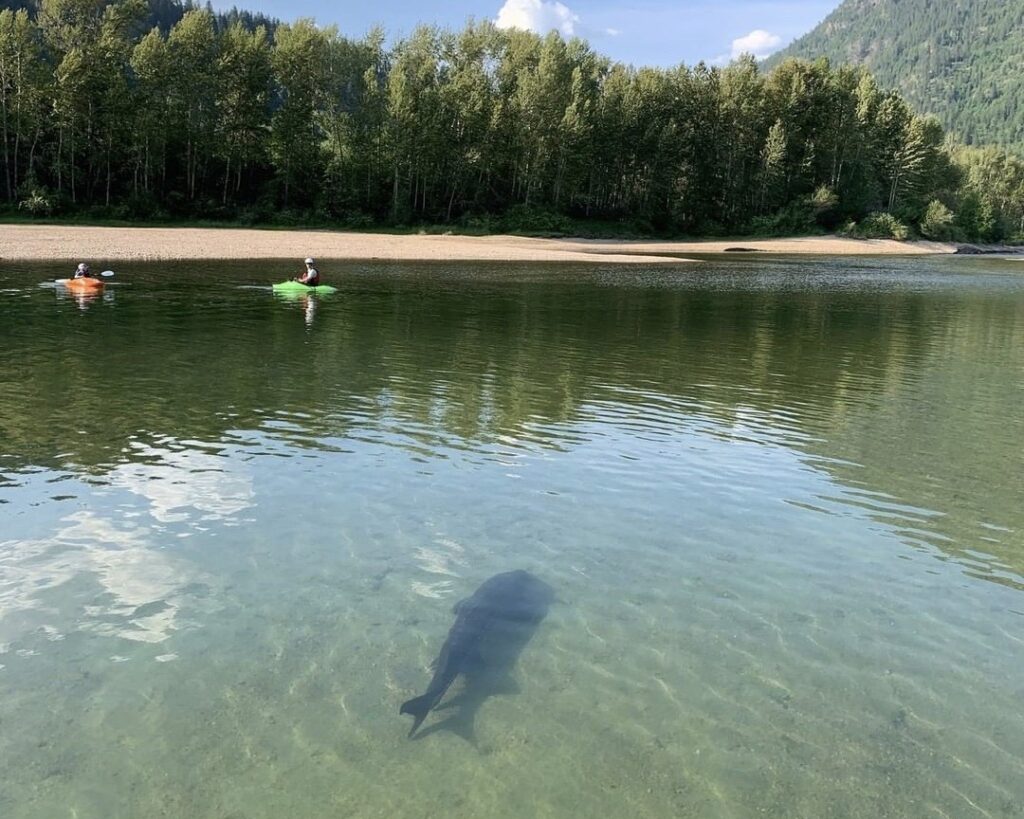
FISH
Our safari continues underwater with some unique species such as the Kokanee, a relative of the Sockeye salmon but one that doesn’t travel to the sea. Instead it lives most of its life in large bodies of water such as Arrow Lakes, where the largest one in the world was caught. Like their coastal cousins, Kokanee swim upstream to spawn and every fall you’ll find certain waterways, such as Deer Creek off Lower Arrow Lake, filled with fish that have turned a vibrant shade of red. You’ll also find plenty of bears and various other species feeding on them.
Another fish of note is the White Sturgeon, a harmless bottom-dwelling species that has been on Earth since the Paleozoic era. These living dinosaurs are also found on Kootenay Lake, where one weighing 350 pounds was once caught and tagged for study, but the best place to spot them is the shallower waters of the Columbia River near Castlegar. It’s not uncommon to see one lazily swimming past under your canoe or paddleboard like the one pictured above.
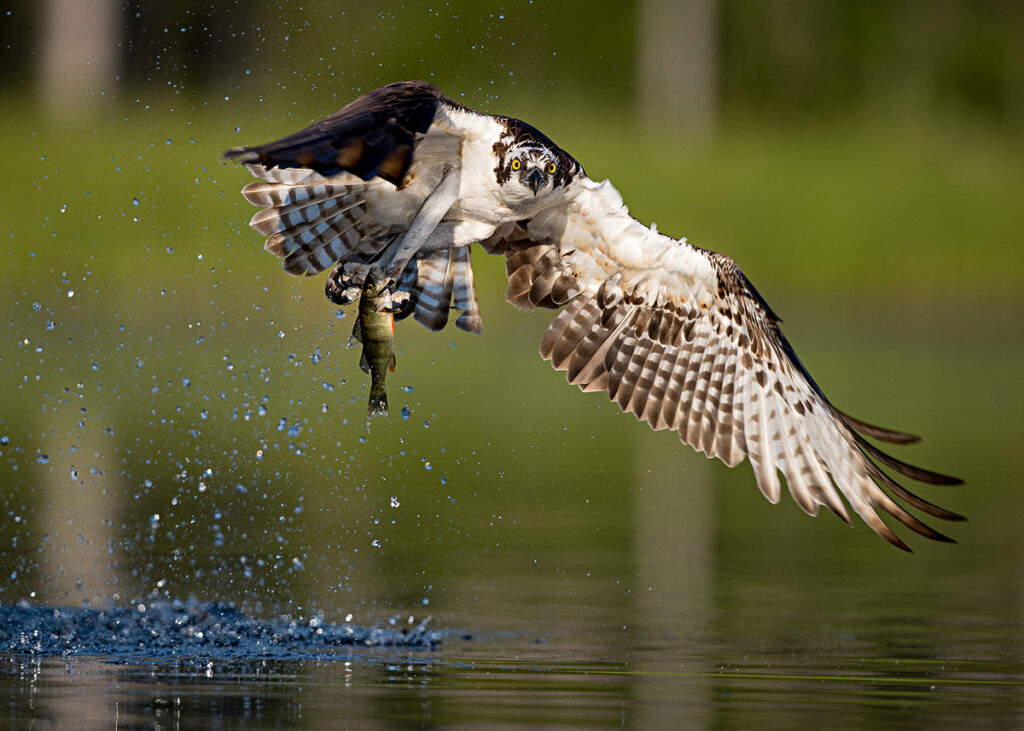
BIRDS
From the streams to the sky: the next stop on our safari takes in all the incredible bird life in the West Kootenay. In the past five years Castlegar has become one of the top destinations in the province for birdwatchers. Over 230 species, from the Rufous hummingbird to the Barrow’s Goldeneye, have now been spotted near the confluence of the Columbia and Kootenay rivers.
Given the abundance of fish in the region, there are also birds of prey in abundance including bald eagles, which can grow to have a wingspan of over two metres. You’ll also see a many osprey (pictured above). These migratory birds can be seen with their young in aerial nests around the lakes and rivers during the warmer months before travelling to Central and South America in the winter. Owls, kingfishers and even vultures can also be spotted near the shorelines.
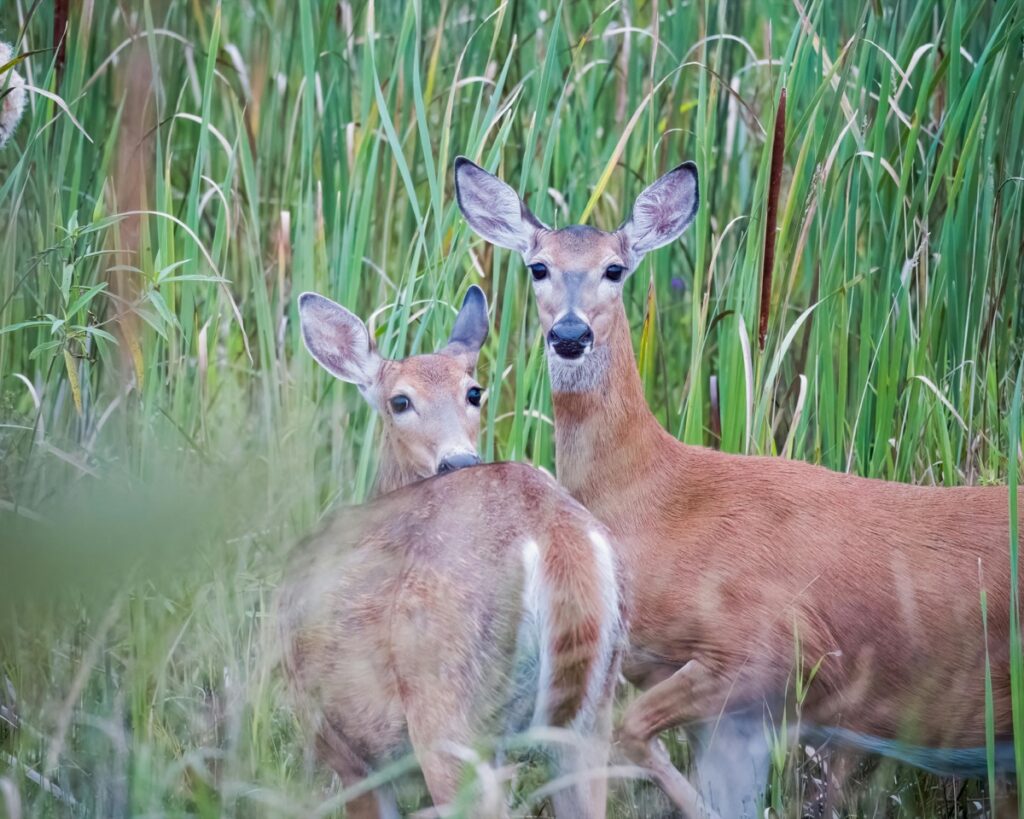
UNGULATES
Ungulates, or animals with hooves, are prevalent throughout the area surrounding Castlegar. Snowy white mountain goats live in the alpine and can be seen in such places as Valhalla Provincial Park and big-horned sheep are also common, especially near Syringa Park. But the most common are white-tailed deer (seen above), which favour the valley bottoms, and the mule deer, which prefers living at elevation. Moose are occasionally spotted in marshes around the West Kootenay and elk are known to graze in meadows. Be particularly cautious with all ungulates during the fall rutting season as well as in the Spring when protective mothers are rearing their calves.
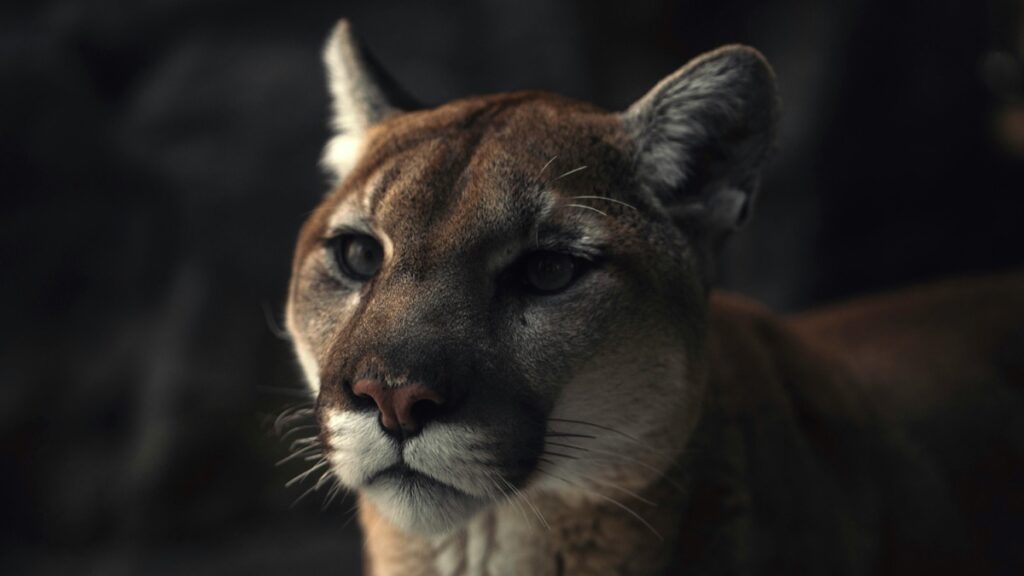
COUGARS
While big cats such as lions are a staple of African safaris, the chances of spotting the West Kootenay version, the North American Cougar, are slim. These solitary animals live in forests throughout the region and are occasionally seen dashing across logging roads but because of their excellent camouflage and stealth nature, sightings are rare. If in the backcountry, you can easily avoid encounters by travelling in groups and making noise while you hike.
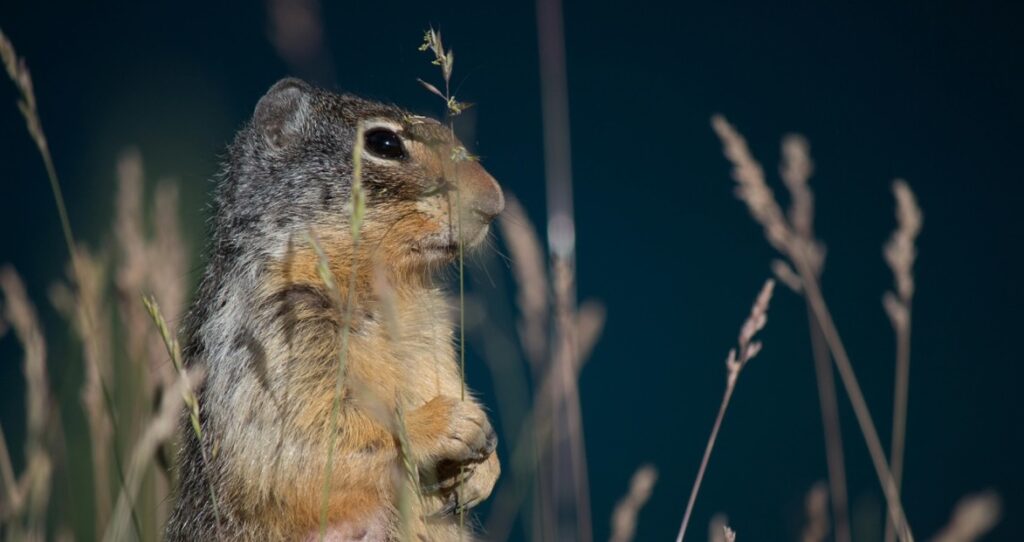
OTHER ANIMALS
There are plenty of other species to see while on safari in the West Kootenay. Otters, muskrats and beavers are commonly spotted in and near the water, while marmots and pikas are plentiful in the alpine and the Columbian Ground Squirrel (seen above) can be spotted in a variety of locations including Syringa Provincial Park. As for reptiles you can find blue-tailed skinks, Western Toads, Pacific Treefrogs, and Columbia Spotted Frogs throughout the area as well as the beautiful Western Painted Turtle.
From the water to the sky, from the forests to the mountaintops, there are all kinds of wildlife to be seen while on safari in the West Kootenay region of British Columbia. We encourage you to tread lightly, safely, and with respect for these special creatures.

